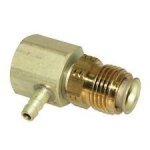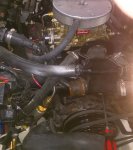irishfootballboy
Cadet
- Joined
- Apr 12, 2020
- Messages
- 8
i have a '91 186scr monterey with a 4.3 mercruiser with alpha 1. to start out it runs ok although it does seem a little sluggish and lacking power- until this started top speed was 36-38, now 30-32. when i put the boat away for winter in 2018 it was fine. to start of the season in 2019 i decided it was time to redo the bellows. so i had the bellows done as well as replaced the trim limit switches which hadn't worked in a while. also a regular service- oil etc. first trip to lake boat was ok, but a bit weak, for about an hr and half. then starting sputtering but not shutting down. back off to neutral, idles fine, engage and go a ways, then it repeats. keeps repeating and getting a little worse each time. to the point that it will only run about 10mph and 1500rpm. anything more is sputters and will shut down if i dont go back to idle. plenty of fuel, oil pressure good, temp good. it shuts off and will fire right back up and idle fine. took to shop and compression fine and suspect water in fuel or something,replace filter and fuel. back to the lake and same thing again after an hr or so. had card rebuilt, new distributor, wires, and plugs. still same thing but a little worse now. ran fine for 1.5hr then started. got worse quicker this time. and this time it would not rev in neutral either to the point that it wouldnt idle and would shut down. it honestly seems to be starving for fuel. is there anything that could cause the fuel pump to start failing after that long running? seems like it would either be good or bad. its also odd that it cranks back up so easily after it shuts down. planning to take back to the shop but just looking for some ideas. a part of me goes back to when the bellows and switches were replaced and if there is something that could be loose or shorting that could have been affected then like a ground wire or something.





















